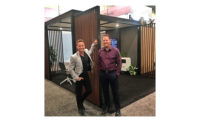The Sagaponac Effect: Modernist Subdivisions Multiply

The Sagaponac Effect
Designed by Lorcan O'Herlihy, a version of the 12 Houses project-originally envisioned for Los Angeles-will be built in Oklahoma City.
Image courtesy Lorcan O'Herlihy

The Sagaponac Effect
Residences at the 12 Houses subdivision are based on four malleable prototypes.
Image courtesy Lorcan O'Herlihy

The Sagaponac Effect
Developed by Skymodern, the Kessler Woods subdivision in Texas features residences designed by Hammers + Partners: Architecture and Clifford Welch Architect.
Image courtesy Skymodern

The Sagaponac Effect
Kessler Woods residences are ensembles of mostly rectilinear volumes that emphasize courtyards and other outdoor areas.
Image courtesy Skymodern

The Sagaponac Effect
At the Urban Reserve subdivision outside Dallas, homeowners initially could chose from 20 pre-approved architecture firms including Morrison Seifert Murphy, which designed this house.
Image courtesy Urban Reserve Developers

The Sagaponac Effect
Urban Edge has presold half of its 50 lots, and 12 residences are either already finished or under construction.
Image courtesy Urban Reserve Developers

The Sagaponac Effect
The Houses of Indian Beach, in Sarasota, Florida, features 23 residences designed by Guy Peterson, FAIA, who also is co-developer.
Image courtesy Guy Peterson, FAIA

The Sagaponac Effect
Although the handful of Modernist subdivisions nationwide are attracting interest from architects and homebuyers alike, Peterson says, "It's hard to find a neighborhood that's not heavily deed-restricted from doing a modern home."
Image courtesy Guy Peterson, FAIA



Post a comment to this article
Report Abusive Comment